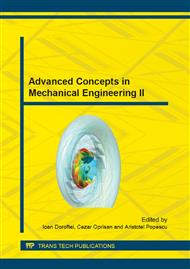p.571
p.577
p.585
p.589
p.595
p.601
p.607
p.611
p.617
Cultural Influence in Engineering Education, Business and Economics in Terms of Multinational Approach
Abstract:
With the every ambitious expanding Strategy 2020 of the European Union, to become the most competitive region globally, generates the urgent need to handle multinational (across national) EU and non EU groups in terms of joint training activities. This paper tries to build a bridge between traditional research in terms of national cultures, primarily between the Hofstede and Trompenaars& Hampden-Turner theory buildings and applied methodology. The applied research tackles some first steps in terms of how this traditional research could be applied in education for engineering and business and economics. Thereby showing opportunities to bring a better learning outcome by avoiding cultural "failures" made obvious by this research. The theoretical framework applies into planning phase, delivery phase and follow up phase of the pedagogical cycle.
Info:
Periodical:
Pages:
607-610
Citation:
Online since:
October 2014
Authors:
Keywords:
Price:
Сopyright:
© 2014 Trans Tech Publications Ltd. All Rights Reserved
Share:
Citation:


